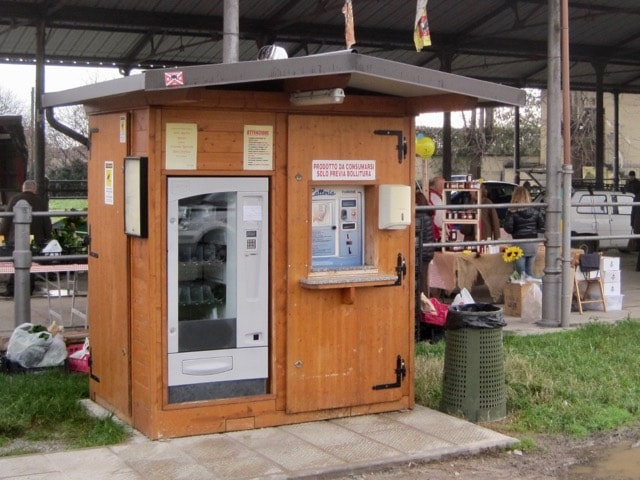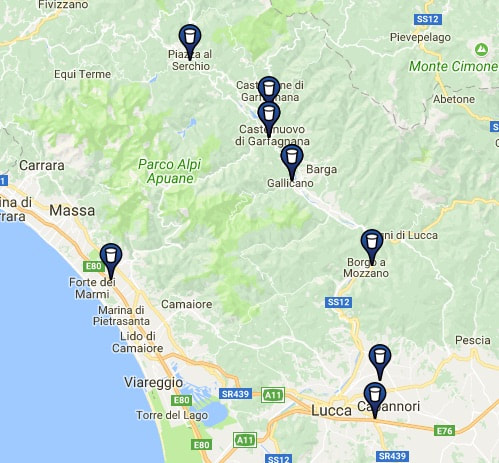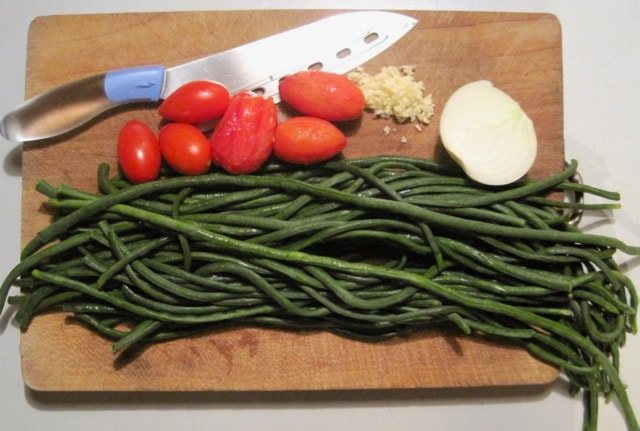|
On the way back from a cooking lesson I’d arranged for clients, I’m crawling along at a Slow Food snail’s pace (no doubt infuriating the rush-hour drivers behind me) when I spy the little wooden hut I’m searching for. The hut — a kind of mini-barn — shelters a machine that dispenses unpasteurised milk almost straight from the cow and is part of an Italian rural development programme to shorten the supply chain and put consumers’ money directly into the pockets of farmers. The farmer tests every batch of milk with the lab equipment in his barn. Health and safety officials also check the milk regularly. There’s a website where you can find all the ‘mechanical cows’ in Italy. Here are the ones near me. A crowd of customers is gathered round, each hugging one or more empty glass bottles. It looks like happy hour at a bar, but as I get closer, I realise they’re waiting for the young farmer to clean and refill the ‘mechanical cow’. The landscape being more industrial than pastoral in this part of the Capannori, I ask the farmer how far away his farm is. He pulls me a few steps to one side and points through a gap in the buildings to his cow barn, about half a kilometre from us. Not many food miles required to fill the machine. Sensing a captive audience, he signals me over to his milk truck and opens the side door to reveal a secret cargo… Lying on the back seat is a large bunch of stringa. His own produce he proudly explains, harvested that afternoon for a customer who will be arriving any moment, so he regrets he can’t sell me any. ‘Stringa’ means ‘shoelace’ and refers to a small diameter green bean, grown only in the Lucca plain and nearby Versilia, that reaches 70–80 cm in length — more a bootlace, really. I explain that I organise gastronomic tours to visit small producers and ask whether I could bring some guests by to see his farm. He suggests I telephone next time I’m passing and he’ll show me around. He returns to his work, now filling the bottle dispenser with new glass bottles, for new customers or those who have forgotten theirs at home. By now the crowd has dispersed and I fill my own bottle. The milk costs 1 euro a litre and, for small consumers, you can buy it in units of 100ml, rather than having to buy a whole litre at once. It tastes intensely of milk, unlike the white liquid one buys at the supermarket, which costs €1,40. I say arrivederci, but he’s loath to lose a sympathetic ear. He looks indecisive, then makes up his mind, goes to the truck and steals a large handful of stringa from the bunch on the seat. ‘Here’, he says, ‘You know how to cook them, don’t you?’ ‘Yes, stew them with onions, garlic and tomato.’ ‘They’re delicious with rabbit, but only with my grandmother’s.’ He reminisces, ‘When I was a boy, I refused to eat rabbit if my mother bought it from the butcher. It didn’t have any flavour compared to my nonna’s. But she’s gone now, and I don’t have time to keep chickens and rabbits’, he continues wistfully. I promise to return soon, and bear my booty home to stew my stringa.
1 Comment
29/10/2020 13:57:06
Thank you for this! I haven’t found buttermilk here in Korea, so I’ve been using lemon and milk and it works great. I had no idea yogurt and milk was another option
Reply
Your comment will be posted after it is approved.
Leave a Reply. |
Email Subscription
Click to subscribe to this blog and receive notifications of new posts by email. AuthorErica Jarman Categories
All
Archives
October 2023
|
|
copyright 2017 sapori-e-saperi.com | all rights reserved
|
Website by Reata Strickland Design




 RSS Feed
RSS Feed



